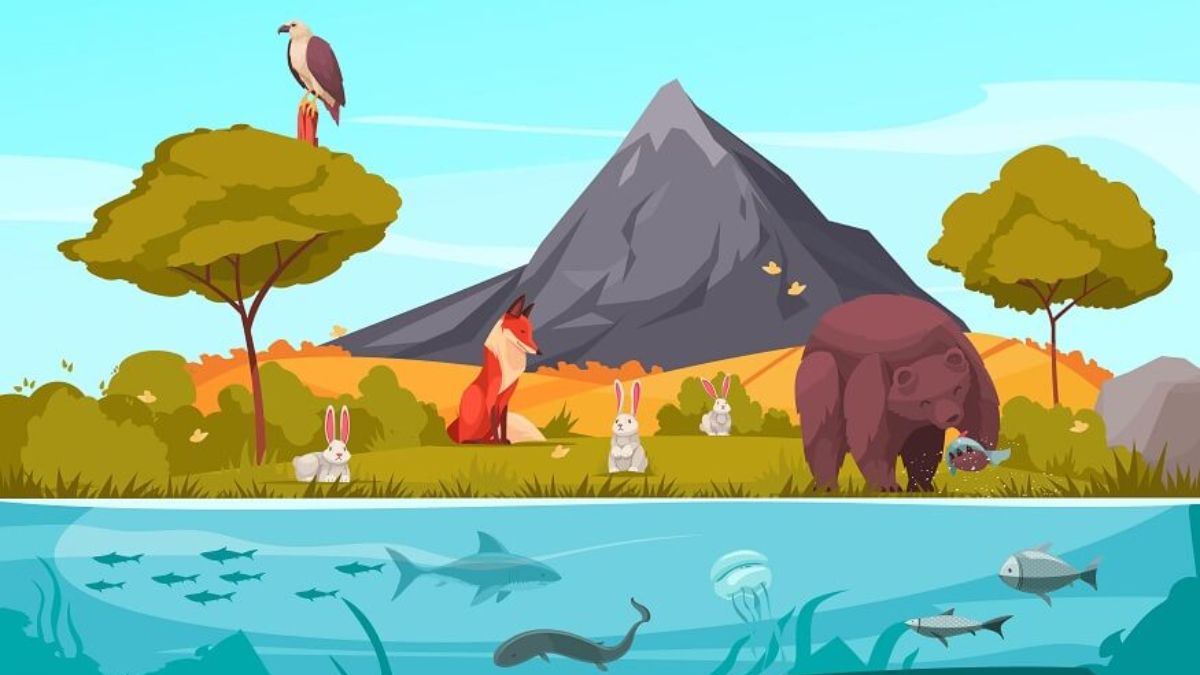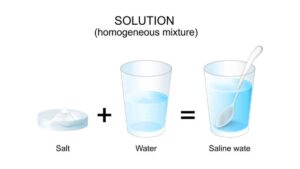The National Eligibility cum Entrance Test is a national level medical entrance exam that tests student’s with their skills and understanding of various chapters from Physics, Chemistry, and Biology subjects. All the students who are to appear in the NEET 2026 exam must complete their preparations for the exam by reading about all the key topics mentioned in the NEET Syllabus 2026.
In this article, we have shared the NEET Notes for the Ecosystem chapter, which is a crucial part of the NEET Biology Syllabus 2026. The chapter consists of various key topics that are detailed below in the article.
Ecosystem
Ecosystem is a crucial chapter in the NEET (National Eligibility cum Entrance Test) biology syllabus, focusing on the structure and functions of ecosystems, including biotic (living) and abiotic (non-living) components, energy flow, nutrient cycling (like carbon, nitrogen), ecological pyramids, succession, and ecosystem services. The topic is a vital part of the NEET exam, requiring candidates to understand the complex interactions within these natural units of nature for success.
An ecosystem is a structural and functional unit of nature, consisting of living organisms (biotic components) and non-living components (abiotic components) interacting together to form a stable system. Examples include a pond, forest, grassland, desert, estuary, and ocean.
Types of Ecosystems
- Natural Ecosystem
- Exists naturally without human interference.
- Examples: Forest, Desert, Grassland, Pond, Ocean.
- Artificial Ecosystem
- Created and maintained by humans.
- Examples: Crop fields, Aquariums.
- Terrestrial Ecosystem
- Found on land surfaces.
- Examples: Forests, Grasslands, Deserts.
- Aquatic Ecosystem
- Found in water bodies.
- Examples: Freshwater (ponds, lakes, rivers) and Marine (seas, oceans).
Components of Ecosystem
1. Abiotic Components
Non-living elements that affect living organisms:
- Light
- Temperature
- Water
- Air
- Soil and minerals
2. Biotic Components
Living organisms in an ecosystem are classified based on their nutritional relationships:
- Producers (Autotrophs): Green plants and cyanobacteria that prepare food through photosynthesis.
- Consumers (Heterotrophs):
- Primary consumers – herbivores (e.g., deer, rabbit)
- Secondary consumers – carnivores (e.g., frog, fox)
- Tertiary consumers – top predators (e.g., lion, eagle)
- Decomposers (Saprotrophs): Fungi and bacteria that decompose organic matter into simpler substances.
Functions of Ecosystem
- Energy Flow – Movement of energy through the food chain.
- Nutrient Cycling – Recycling of nutrients like carbon and nitrogen.
- Ecological Succession – Gradual change in species composition.
- Homeostasis – Maintenance of equilibrium in the environment.
- Food Chain and Food Web Formation – Maintaining balance among different trophic levels.
Energy Flow in Ecosystem
- Energy flow is unidirectional — from the sun → producers → consumers → decomposers.
- Described by 10% law (Lindeman’s Law): Only 10% of energy is transferred from one trophic level to the next.
- Example:
Grass (producer) → Deer (primary consumer) → Lion (secondary consumer)
Food Chain and Food Web
Food Chain
food chain is a linear sequence that shows the transfer of energy and nutrients from one organism to another in an ecosystem, starting with a producer and moving through various levels of consumers and decomposers.
Example: Phytoplankton → Zooplankton → Small fish → Large fish → Man
Food Web
A food web illustrates the complex feeding relationships and the flow of energy within an ecosystem, formed by multiple interconnected food chains.
Ecological Pyramids
An ecological pyramid is a graphical representation illustrating an ecosystem’s structure by showing the quantitative relationships of organisms at successive trophic levels, such as:
- Number
- Biomass
- Energy
Types:
- Pyramid of Number: Shows number of organisms at each level.
- Pyramid of Biomass: Represents total biomass at each level.
- Pyramid of Energy: Always upright, as energy decreases at each level.
Nutrient Cycling (Biogeochemical Cycles)
1. Carbon Cycle
- Movement of carbon between the atmosphere, plants, animals, and soil.
- Major processes: Photosynthesis, respiration, decomposition, and combustion.
2. Nitrogen Cycle
- Conversion of nitrogen between different forms by microorganisms.
- Steps: Nitrogen fixation → Nitrification → Assimilation → Ammonification → Denitrification.
Ecological Succession
- Sequential, predictable change in species composition in an area over time.
- Primary succession: Starts on a bare rock or new habitat.
- Secondary succession: Occurs in an area where previous life existed but was destroyed.
Ecosystem Productivity
- Gross Primary Productivity (GPP): Total energy fixed by producers.
- Net Primary Productivity (NPP): Energy available to consumers after plant respiration.
Formula:
NPP = GPP – R (Respiration loss) - Secondary Productivity: Energy assimilated by consumers.
- Decomposition: Breakdown of organic matter into simpler substances by decomposers.
Ecosystem Services
Ecosystems provide several vital benefits:
- Provisioning Services – Food, water, fuel, and fiber.
- Regulating Services – Climate regulation, flood control, and disease regulation.
- Supporting Services – Soil formation, nutrient cycling.
- Cultural Services – Recreation, spiritual, and aesthetic values.
NEET Important Questions – Ecosystem
- Define ecosystem and explain its components.
- What is the difference between a food chain and a food web?
- Explain the 10% law of energy transfer.
- What are ecological pyramids? Describe their types.
- What are the functions of an ecosystem?
- Describe nitrogen and carbon cycles briefly.
- What is ecological succession? Differentiate between primary and secondary succession.
- What is the significance of decomposers in an ecosystem?
- Write the formula for NPP.
- Explain different types of productivity in an ecosystem.
- What are ecosystem services? Give examples.
- How is energy flow unidirectional in nature?
- What is the difference between natural and artificial ecosystems?
- What are the major biotic components of an ecosystem?
- Name two examples each of terrestrial and aquatic ecosystems.









 NEET Preparation Strategy 2026: Detailed...
NEET Preparation Strategy 2026: Detailed...
 Free NEET Sample Papers 2026 PDF | Downl...
Free NEET Sample Papers 2026 PDF | Downl...
 Salt Analysis NEET Notes, Check Importan...
Salt Analysis NEET Notes, Check Importan...









